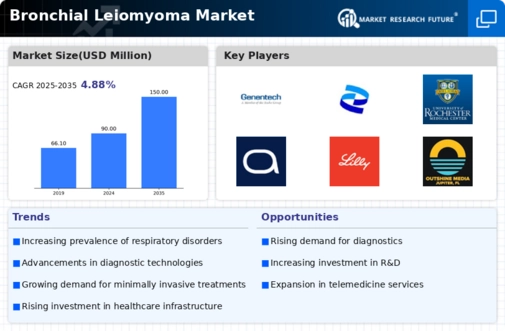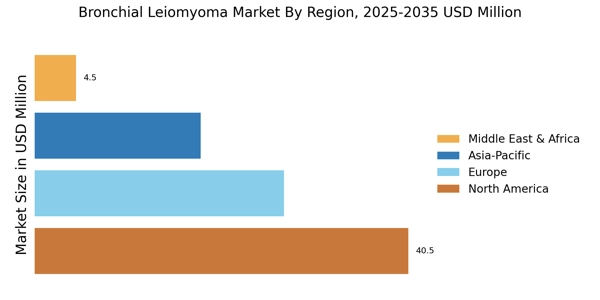Enhanced Focus on Patient-Centric Care
Enhanced focus on patient-centric care is emerging as a vital driver for the Bronchial Leiomyoma Market. Healthcare providers are increasingly prioritizing the needs and preferences of patients, which may lead to the development of tailored treatment plans for those diagnosed with bronchial leiomyoma. This shift towards personalized medicine could result in improved patient satisfaction and adherence to treatment regimens. Furthermore, as patients become more involved in their healthcare decisions, there may be a greater demand for educational resources and support services related to bronchial leiomyoma. This trend could stimulate growth in the market, as healthcare providers and pharmaceutical companies respond to the evolving expectations of patients.
Increasing Incidence of Bronchial Leiomyoma
The rising incidence of bronchial leiomyoma appears to be a pivotal driver for the Bronchial Leiomyoma Market. As more cases are diagnosed, the demand for effective treatment options is likely to increase. Recent data indicates that the prevalence of this rare tumor type is gradually rising, which may lead to heightened awareness among healthcare professionals and patients alike. This trend suggests that healthcare systems may need to allocate more resources towards the diagnosis and management of bronchial leiomyoma, thereby expanding the market. Furthermore, the increasing number of patients seeking treatment could stimulate research and development efforts aimed at innovative therapeutic solutions, ultimately benefiting the Bronchial Leiomyoma Market.
Technological Advancements in Diagnostic Tools
Technological advancements in diagnostic tools are likely to play a crucial role in shaping the Bronchial Leiomyoma Market. Enhanced imaging techniques, such as high-resolution CT scans and MRI, facilitate earlier and more accurate detection of bronchial leiomyoma. This increased diagnostic capability may lead to a higher rate of identification of asymptomatic cases, which could contribute to a growing patient population requiring treatment. Moreover, the integration of artificial intelligence in diagnostic processes may further streamline the identification of bronchial leiomyoma, potentially leading to improved patient outcomes. As diagnostic accuracy improves, the market for bronchial leiomyoma treatments is expected to expand, reflecting the need for effective management strategies.
Growing Investment in Healthcare Infrastructure
Growing investment in healthcare infrastructure is another significant driver for the Bronchial Leiomyoma Market. As countries enhance their healthcare systems, the availability of specialized medical facilities and trained personnel is likely to improve. This investment may lead to better access to diagnostic and treatment options for patients suffering from bronchial leiomyoma. Furthermore, increased funding for healthcare initiatives could support research and development in this area, fostering innovation in treatment modalities. The expansion of healthcare infrastructure may also encourage collaboration between medical institutions and pharmaceutical companies, potentially resulting in the introduction of novel therapies to the Bronchial Leiomyoma Market.
Rising Demand for Minimally Invasive Procedures
The rising demand for minimally invasive procedures is expected to significantly influence the Bronchial Leiomyoma Market. Patients increasingly prefer treatment options that offer reduced recovery times and lower risks of complications. As a result, there is a growing interest in techniques such as video-assisted thoracoscopic surgery (VATS) for the removal of bronchial leiomyoma. This trend may lead to the development of new surgical instruments and technologies tailored for minimally invasive approaches. Additionally, as more healthcare providers adopt these techniques, the overall market for bronchial leiomyoma treatments could expand, reflecting the shift towards patient-centered care and improved surgical outcomes.


















Leave a Comment